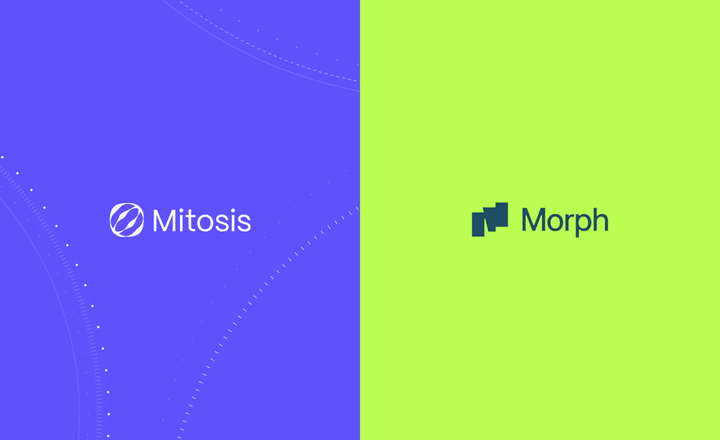The Role of Stablecoins in DeFi and Their Impact on the Market

Stablecoins have become a cornerstone of decentralized finance (DeFi), offering a reliable medium of exchange in a highly volatile cryptocurrency ecosystem. By pegging their value to fiat currencies, commodities, or algorithmically managed supplies, stablecoins mitigate the price fluctuations common to cryptocurrencies like Bitcoin and Ethereum. This stability makes them indispensable to DeFi, where they support lending, borrowing, trading, and liquidity provision.
This article explores the essential role of stablecoins in DeFi, their underlying mechanisms, their broader market impact, and the key challenges and opportunities they present.
What Are Stablecoins?
Stablecoins are digital assets designed to maintain a stable value, usually pegged to a fiat currency like the U.S. dollar, a basket of assets, or governed by algorithmic rules. They fall into three primary categories:
- Fiat-Collateralized Stablecoins: Backed 1:1 by fiat currency held in bank reserves (e.g., Tether [USDT], USD Coin [USDC]). These rely on centralized entities to manage and audit reserves.
- Crypto-Collateralized Stablecoins: Backed by other cryptocurrencies and often over-collateralized to buffer against volatility (e.g., DAI, backed by Ethereum and other crypto assets).
- Algorithmic Stablecoins: Maintain price stability through smart contract algorithms that adjust token supply based on demand (e.g., TerraUSD [UST], which collapsed in 2022).
Stablecoins merge the advantages of cryptocurrencies—decentralization, speed, and global accessibility—with the price stability of traditional assets, making them ideal for DeFi use cases.
The Role of Stablecoins in DeFi
DeFi is a blockchain-based ecosystem of financial applications that operate without intermediaries like banks. Stablecoins are foundational to this system, enabling everything from trading to collateralization. Key roles include:
1. Medium of Exchange
Stablecoins provide a dependable unit of account across DeFi protocols. They are essential for trading on decentralized exchanges (DEXs) like Uniswap and Curve, where trading pairs (e.g., USDC/USDT) enable low-slippage and efficient transactions.
2. Liquidity Provision
Stablecoins form the backbone of DeFi liquidity pools. Platforms like Curve and SushiSwap rely heavily on stablecoin-based pools, which reduce impermanent loss and provide attractive yields for liquidity providers. Curve, for instance, is optimized for stablecoin swaps, offering lower fees and higher efficiency.
3. Collateral for Lending and Borrowing
Lending platforms such as Aave, Compound, and MakerDAO use stablecoins both as collateral and as loanable assets. Their stable value makes them ideal for minimizing risk in overcollateralized loans and for maintaining trust in long-term positions.
4. Yield Farming and Staking
In yield farming strategies, stablecoins are a popular choice due to their minimized exposure to price volatility. Platforms like Yearn.Finance and Convex Finance use stablecoins to optimize yield-generating strategies, sometimes offering double-digit APYs during bullish market conditions.
5. Bridging Traditional and Decentralized Finance
Stablecoins serve as a bridge between traditional finance (TradFi) and DeFi by enabling fiat-like stability in a digital context. They allow users to move capital between centralized exchanges, DeFi protocols, and even real-world asset platforms with ease.
Impact of Stablecoins on the DeFi Market
1. Market Growth and Adoption
Stablecoins have fueled DeFi’s growth by providing a low-volatility on-ramp for new users. As of May 2025, DeFi’s total value locked (TVL) exceeds $100 billion, with stablecoins like USDT, USDC, and DAI contributing significantly to this liquidity. Their adoption has expanded beyond crypto enthusiasts to include users in inflation-prone regions, offering an alternative to unstable local currencies.
2. Market Stability and Efficiency
Stablecoins reduce volatility across DeFi markets, enabling predictable yields, efficient collateralization, and low-slippage trades. Their stability also makes DeFi more appealing to institutional investors. Aave's introduction of its decentralized stablecoin GHO reflects this trend toward creating native, protocol-aligned stable assets.
3. Risks and Challenges
Despite their utility, stablecoins introduce several systemic risks:
- Centralization: Fiat-backed stablecoins rely on centralized issuers like Tether and Circle, raising transparency concerns, especially when reserve audits are opaque.
- Regulatory Scrutiny: Governments are tightening controls on stablecoin issuance due to concerns over money laundering, tax evasion, and financial stability. The U.S. proposed the Stablecoin Tether and Economy Transparency Act (2024), while the EU’s MiCA framework enforces strict reserve and reporting standards.
- Depegging Events: Algorithmic stablecoins, like TerraUSD, can fail catastrophically. The 2022 UST collapse wiped out $40 billion in value and undermined trust in decentralized financial systems.
- Systemic Risk: A failure of a major stablecoin could trigger liquidity crises across DeFi platforms, as many protocols depend heavily on stablecoin reserves for operations.
4. Innovation and Competition
Stablecoins are driving innovation in DeFi through new models of decentralization and capital efficiency. The emergence of alternatives like GHO and the ongoing development of smart contract-based risk management tools are reshaping the competitive landscape.
5. Financial Inclusion
Stablecoins empower underserved populations by enabling access to global financial services without the need for a traditional bank account. In regions like Sub-Saharan Africa and Latin America, they serve as both savings tools and remittance mechanisms, facilitating peer-to-peer commerce and investment.
Challenges Facing Stablecoins in DeFi
While transformative, stablecoins face several hurdles:
- Regulatory Uncertainty: With differing global approaches, issuers must navigate a fragmented compliance landscape that can hinder growth and innovation.
- Scalability and Cost: DeFi’s reliance on Ethereum has resulted in high gas fees, though layer-2 solutions like Arbitrum and Optimism are helping alleviate congestion.
- Transparency and Trust: Centralized stablecoin issuers must ensure real-time audits and full reserve backing to maintain credibility.
- Security Risks: Hacks and exploits in DeFi protocols remain a persistent threat. In 2024, over $2 billion was lost to vulnerabilities—many involving stablecoin liquidity pools.
Opportunities and Future Outlook
Despite challenges, stablecoins are well-positioned to remain integral to the future of DeFi. Key trends shaping their trajectory include:
- Decentralized Stablecoins: Protocol-native assets like DAI and GHO aim to reduce reliance on centralized control while maintaining value stability.
- Cross-Chain Interoperability: Multi-chain ecosystems (e.g., Polkadot, Cosmos) are enhancing stablecoin portability and liquidity across blockchains.
- Institutional Adoption: Increasing regulatory clarity is encouraging traditional finance to enter DeFi. For instance, BlackRock’s tokenized BUIDL fund on Ethereum uses USDC for settlements.
- Real-World Asset (RWA) Integration: Platforms like Centrifuge and Goldfinch are using stablecoins to tokenize invoices, loans, and real estate, expanding DeFi’s real-world footprint.
- CBDC Interaction: Central Bank Digital Currencies (CBDCs) may compete with or complement stablecoins, offering new integration pathways between state-backed and decentralized financial infrastructure.
Conclusion
Stablecoins are the lifeblood of the DeFi ecosystem, enabling stable, scalable, and inclusive financial services. By underpinning liquidity pools, trading platforms, and lending markets, they support a DeFi economy valued at over $100 billion. Their role in democratizing finance, reducing volatility, and attracting institutional capital is unmatched.
However, their continued success depends on navigating regulatory, technical, and systemic challenges. As decentralized alternatives, cross-chain functionality, and RWA integration mature, stablecoins will cement their status as foundational assets in both DeFi and the broader digital economy.
Learn with mitosis








Comments ()